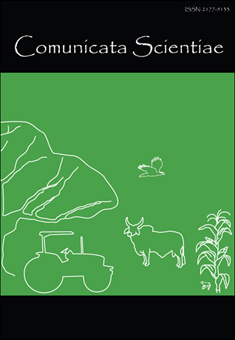Fungi contamination in feed to cultivated shrimp
DOI:
https://doi.org/10.14295/cs.v4i1.128Keywords:
shrimp culture, Litopenaeus vannamei, microbiology, aquacultureAbstract
The objective of this study was to evaluate the quality of the diet, provided to cultivated shrimps, through fungi counts. One hundred forty four feed samples were collected in four shrimp farms in a randomized way and letters were used to designate them. The experimental design was completely randomized in factorial scheme 2 x 3 x 2 (periods of the year, cultivation phases and condition of the packing and properties), with three repetitions of 100 g feed. Brackets of the dilutions 10-1 to 10-3 were sowed in Petri plates containing Dichloran Rose Bengal Cloranfenicol and they were incubated by seven days to 28 ºC. The results were transformed in log 10(x+1) and they were submitted to the test of Duncan, with p<0,05. Considering all samples analyzed, 136 (94,4 %) presented contamination by molds. It was observed the existence of fungi spores, even in samples taken from intact packing. The countings during the dry period oscillated from 1,43 to 2,72 UFC/g and during the rainy one from 2,10 to 5,95 UFC/g, presenting, in this last period, a significant difference among shrimp farms, cultivation phases and, in the two farms, packing condition has also shown to be different. Therefore, it was possible to conclude that feed used has presented fungi spores and that the climatic conditions and packing ones favor the feed contamination.Downloads
Download data is not yet available.
Downloads
Published
2013-03-29
How to Cite
Muratori, M. C. S., Pereira, M. M. G., Costa, A. P. R., Machado Junior, A. A. N., Santos, J. D. F., Lopes, J. B., & Machado, F. C. F. (2013). Fungi contamination in feed to cultivated shrimp. Comunicata Scientiae, 4(1), 85–90. https://doi.org/10.14295/cs.v4i1.128
Issue
Section
Scientific Note
License
All articles published may be reproduced or utilized in any form or by any means whether specified Comunicata Scientiae, author(s), volume, pages and year. The authors are responsible for all the statements and concepts contained in the article.




